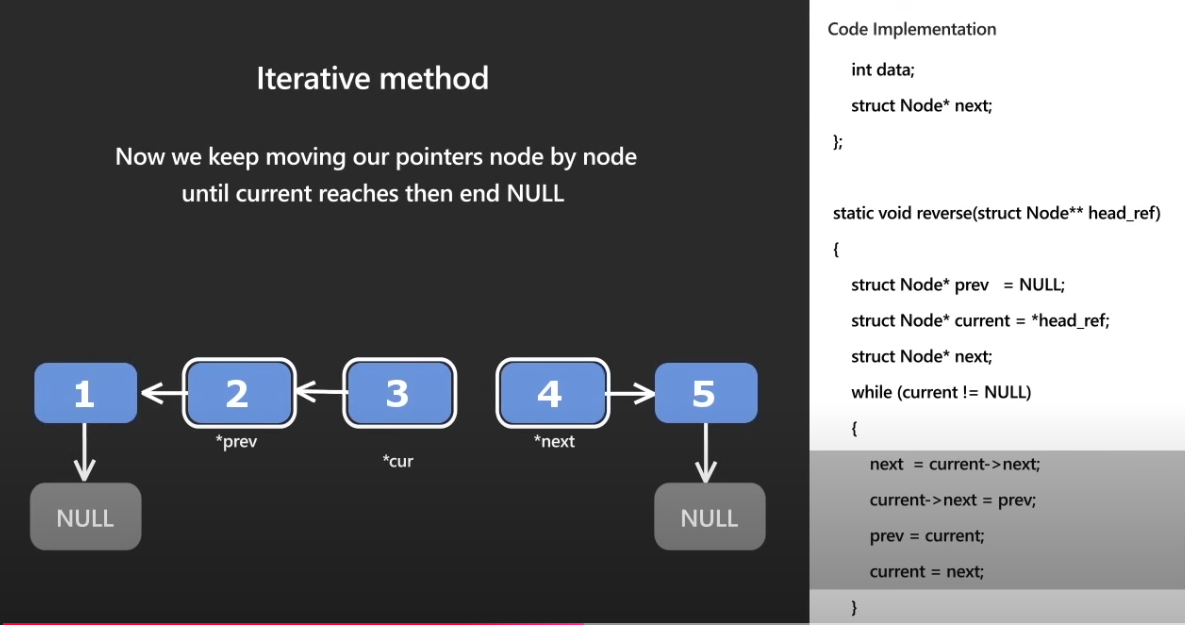Here is the link to the problem: Reverse a linked list (Iterative way).
Problem Statement with Thought Process:
To reverse a linked list iteratively, we can use three pointers:
- Previous Pointer: Keeps track of the previous node, which will help us reverse the links.
- Current Pointer: Points to the current node we’re processing.
- Next Pointer: Temporarily stores the next node before we change the
currentnode’s link.
Here’s the iterative process:
- Start with
previousasNoneandcurrentas the head of the list. - Iterate through the list, and for each node:
- Save the
nextnode. - Reverse the link by making the
currentnode point to thepreviousnode. - Move
previousandcurrentone step forward.
- Save the
- When
currentbecomesNone,previouswill be the new head of the reversed list.
Python Code for Iteratively Reversing a Linked List
class ListNode:
def __init__(self, value=0, next=None):
self.value = value
self.next = next
def reverse_linked_list(head):
previous = None
current = head
while current:
next_node = current.next # Save the next node
current.next = previous # Reverse the link
previous = current # Move previous one step forward
current = next_node # Move current one step forward
return previous # New head of the reversed list
# Example usage
# Creating a linked list 1 -> 2 -> 3 -> 4 -> 5
head = ListNode(1)
head.next = ListNode(2)
head.next.next = ListNode(3)
head.next.next.next = ListNode(4)
head.next.next.next.next = ListNode(5)
reversed_head = reverse_linked_list(head)
# Print reversed list
current = reversed_head
while current:
print(current.value, end=" -> " if current.next else "")
current = current.next
Explanation of the Code
- Previous and Current:
previousandcurrentpointers help us reverse the links one node at a time. - Loop: Each iteration updates the
nextpointer of thecurrentnode to point backward (toprevious), and then all pointers are moved one step forward. - Return: When
currentbecomesNone,previouspoints to the new head of the reversed list.
Complexity Analysis
- Time Complexity: (O(n)), since each node is visited once.
- Space Complexity: (O(1)), as only a constant amount of extra space is used.
